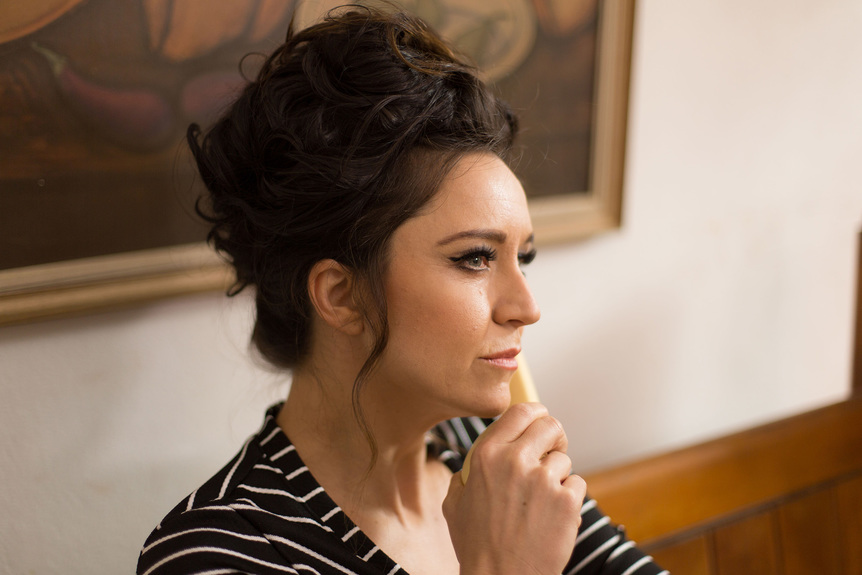-
From Current Issue
-
- Editor’s Letter Fire in the Heart
- Reviews I Gusti Ayu Kadek Murniasih
- Reviews 11th Seoul Mediacity Biennale: “One Escape at a Time”
- Dispatch Networked China
- One on One Monira Al Qadiri on Yukio Mishima
- Essays The rise of independent art spaces in pandemic-era Shanghai
- Features Tuan Andrew Nguyen
- Table of Contents
- Web Exclusives
- Archive
- Subscribe

R
E
V N
E
X
T
Production still of Emma Jackson in ZANNY BEGG’s The Beehive, 2018, digital video installation, color, stereo sound: duration variable. Photo Philippa Bateman. Courtesy Enigma Machine and the artist.
The Beehive (2018) tells the story of Juanita Nielsen, a Sydney heiress, activist, and publisher of local newspaper NOW who disappeared in 1975. No body has yet been recovered and her presumed murder remains an unsolved mystery. At the time of her disappearance, Nielsen had been campaigning against the development of Sydney’s Kings Cross neighborhood, advocating for the disrupted and dispersed communities in the pages of her newspaper. Zanny Begg, an artist and advocate for women and marginalized communities, tells Nielsen’s story—or many potential versions of it—in this experimental video display commissioned by Artbank and the Australian Centre for the Moving Image (ACMI).
The Beehive speculates on the circumstances of Nielsen’s murder by presenting 1,344 algorithmically generated possible scenarios, each version pieced together from documentary footage and fictional scenes involving Nielsen (played by various actors). This fragmented, non-linear approach prevents the viewer from seeing the whole picture, or fully resolving their own interpretation of events; after all, the case remains open. What is clear across versions is the connection made between gentrification and colonization, which forms the powerful central message of the work. The upheaval of communities through making spaces unaffordable or forcibly relocating tenants can be a violent act, a recolonizing of territory, the human cost of which can be quickly forgotten by the wealthier people who start living and working in these gentrified locales. This parallel is further highlighted by the appearance of protestor Esther Blaskhaus, an Aboriginal woman who died in a deliberate arson attack on her Kings Cross home, as a character in the film. Nielsen had written about Blaskhaus’s suspicious death in connection with attempts to develop the area. In one scene of the film, the dead Nielsen and Blaskhaus chat together sadly, on a vista overlooking the city. Rosellas, a native Australian bird, perch nearby, bringing to mind pre-European Sydney, and the continued impact of white colonizers on the descendants of Indigenous owners of the land. Many of the women who perform the role of Nielsen, as well as the people interviewed, stand against existing power systems in real life, and are targets because of their advocacy. By intermingling the stories of those portraying Nielsen with the story of her activism and death, we are asked to see connections with what is happening in our communities today. Extreme closeups of faces bolster the human connection; the visuals, the city and Kings Cross itself appear secondary.
Other aspects of the installation also present poignant parallels. The title of the work is not only a reference to Nielsen’s iconic hairstyle, but also a metaphor for the buzz and activity that hives and urban centers have in common. This bee motif reappears in the bright yellow panels on the wall opposite to the screen, which feature a repeated honeycomb pattern interweaving bees, hives and major building structures. The same quilted pattern serves as the backdrop for many of the documentary interviews in the film, bridging the present world with the speculative realities of the film, and highlighting details from the film that might otherwise go unnoticed. (In fact, this extends to the merchandise in the gift shop, though a viewer who wants a scarf or bomber jacket as a souvenir of a film about murder in the name of capitalism may be missing something.)
The bee serves as an apt metaphor if one considers its essential—but endangered—role in the ecosystem. If all bees die, humans and other organisms will too. Yet, in the name of money and progress, governments and businesses continue to create an environment toxic to their survival. Like bees, the lives of journalists and activists such as Nielsen and the people she campaigned to protect are more precarious than ever in unstable, post-truth times.
Keeping with the motif, whining singing and bee-like humming form a beautiful, mournful and constant auditory element to the film. A persistent, ominous and unignorable voice buzzing unfailingly, advocating to be remembered and heard. A magnified image of a bee skewered by a pin that appears in the film is repeated around the exhibition space in the form of posters. It’s a stagnant and violent image evocative of murder, confronting through its scale and repetition. This zoomed-in focus on a dead insect lifts the image from banality, discomforting viewers. The same, perhaps, is true of The Beehive’s study of Nielsen, a woman silenced by those more powerful, her story forgotten until placed under Zanny Begg’s renewed scrutiny.
Zanny Begg’s “The Beehive” is on view at the Australian Centre for the Moving Image, Melbourne, until November 4, 2018.
To read more of ArtAsiaPacific’s articles, visit our Digital Library.






